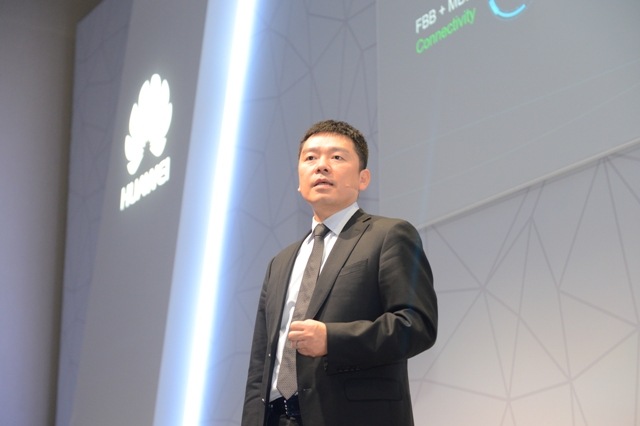Huawei Releases CloudMetro Solution to Accelerate Cloud-based Network Transformation
[Barcelona, Spain, Feb 27, 2017] Huawei officially released its future-ready CloudMetro solution, in a move ultimately helping operators to accelerate their digital transformation and business success. CloudMetro allows metro networks to harness cloud technology to enable resource pooling, service agility, operation automation and open platforms.
The rapid developments in the fields of 4K/VR, enterprise cloud interconnect, and 5G bring about increasing service diversity, together with unknowns. To achieve success, metro networks must remain at the forefront of business innovation and constantly explore ways to enhance user experience.
"Only a metro area network capable of rapid integration, efficient operations, and network capability openness can meet the commercial needs of the new services,” said Wei Feng, CMO of Huawei's Network Product Line. “To exhibit these features, a metro network must use a cloud-based architecture. The CloudMetro solution is a new business enablement system designed to equip for future demands. This solution comprises two parts: upper-layer network cloud engine (NCE) and underlying E2E slicing-capable bearer network. It separates the functional modules, cloud operating system, and underlying physical devices into different layers.

Wei Feng, CMO of Huawei's Network Product Line, Released the CloudMetro Solution
The CloudMetro solution moves management and service functions to the NCE to provide an on-demand LEGO-style service provisioning capability. By introducing service function chains to allow for on-demand service function selection and deployment, this architecture lowers trial costs, significantly shortens service TTM from months to days, satisfying carriers' differentiated service innovation requirements. The standard northbound interfaces are opened to third parties, allowing more applications to be supported. Huawei provides a lab for remote online integration verification, marking a departure from independent development to joint development with partners. Huawei aims to cooperate with industry partners to achieve mutually beneficial outcomes.
The forwarding-control separation design allows this architecture to achieve cloud-based centralized resource control and on-demand dynamic resource scheduling, increasing resource utilization. Unified service management, centralized resource control, and flexible resource scheduling across layers, domains, and vendors allow for online self-service service subscription, one-touch service provisioning, cloud-based service upgrades, and visualized O&M, improving the O&M efficiency tenfold.
The industry's first network slicing router released by Huawei can be used to construct an E2E slicing-capable network. By flexibly slicing network resources along management and control, protocol processing, and forwarding lines, this type of router can provide differentiated SLA for home broadband, 4G/5G, enterprise leased line, and other services. At MWC 2017, Huawei and DT jointly demonstrated 5G network slicing.
"Future metro networks require not only improved service bearer efficiency, but also openness and rapid integration capabilities to meet the diversified demands of future services and applications. We must unleash the full potential of metro networks for rapid network monetization," said Wei Feng. Huawei will continue to explore innovations in this field through partnerships with global operators, and is intent on accelerating cloud-based network transformation.
MWC 2017 runs from February 27 to March 2 in Barcelona, Spain. Huawei is showcasing its products and solutions at booth 1J50 in Fira Gran Via Hall 1, booth 3130 in Hall 3, and the Innovation City zone in Hall 4.

